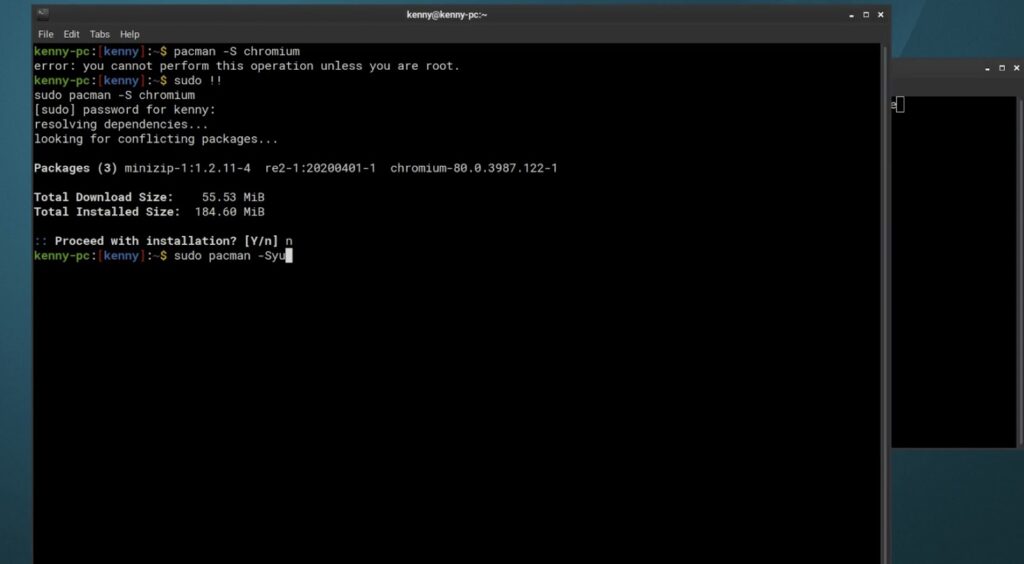In the realm of Arch Linux and its derivatives, there exists a revered entity known as Pacman. Pacman, a command line tool of notable repute, bestows upon users the ability to seamlessly introduce, expunge, and refresh packages upon their system. It is celebrated for its expedition and efficiency, endearing it to the Arch Linux community. In this narrative, we shall delve into the art of querying the Pacman package database.
Unveiling the Package Database
At the heart of this saga lies the package database, a treasure trove of knowledge concerning all that resides within the confines of one’s system. It is a vital cog in the machinery of the Pacman package manager, residing within the system’s recesses and accessed by the user through Pacman’s command line interface. Within its digital confines, lie the secrets of package nomenclature, version history, dependencies, and the status of their installation.
The Art of Querying the Package Database
To embark upon this quest of discovery, one must invoke the incantation ‘pacman -Q’ to initiate the journey. With this command, the curious soul may sift through the database to discern the packages that have found sanctuary within their system. The fruits of this exploration may be presented in a multitude of visages, such as the list, information, or the complete tapestry.
The List Chronicle
In the annals of listing, a succinct inventory of package nomenclature and version numbers unfurls. To partake in this listing ritual, one need only chant ‘pacman -Q’ as an invocation. The resulting scroll shall bear semblance to this:
```
package1 1.0.0-1
package2 2.0.0-1
package3 3.0.0-1
...
```The Information Revelation
Should the seeker desire a more profound revelation, the ‘info’ format stands ready. Here, within a tabular tome, package names, versions, and their mysterious descriptions are illuminated. The key to this chronicle lies in the invocation ‘pacman -Qi’, which unveils secrets thus:
```
Name : package1
Version : 1.0.0-1
Description : Package 1 is a software that does something
Name : package2
Version : 2.0.0-1
Description : Package 2 is a software that does something else
Name : package3
Version : 3.0.0-1
Description : Package 3 is a software that does something different
```The Full Saga
But for those who thirst for a complete saga, ‘full’ format beckons. This narrative encompasses every detail, including dependencies and installation status. To unfurl this tome, the invocation ‘pacman -Ql’ is the key, yielding a tale resembling this:
```
package1 /
|-- etc/
| `-- package1/
| `-- package1.conf
|-- usr/
| |-- bin/
| | `-- package1
| |-- lib/
| | `-- package1/
| `-- share/
| `-- package1/
| `-- man/
| |-- man1/
| | `-- package1.1
| `-- package1.txt
`-- var/
`-- log/
`-- package1/
`-- package1.log
```Pursuing Specific Packages
In this odyssey, one may not only query the entire trove but also embark on quests to seek specific treasures. By invoking ‘pacman -Qs package-name’, the seeker may hone in on a particular package, as exemplified by the pursuit of ‘package1’ with this invocation:
```
pacman -Qs package1
```The result reveals tidings of the package’s presence or absence, regaling the user with version numbers and the repository from whence it hailed.
The Quest for Dependencies
Pacman, in its wisdom, permits seekers to uncover the tendrils of dependency that bind a specific package. By channeling ‘pacman -Qi package-name | grep “Depends On”‘, the curious may uncover a list of dependencies, as seen in the quest for ‘package1’:
```
pacman -Qi package1 | grep "Depends On"
```The Ritual of Database Renewal
As the chapters of this narrative unfurl, one must not forget the importance of keeping the package database current. To rejuvenate this repository of knowledge, the command ‘pacman -Syy’ must be intoned. This sacred ritual refreshes the database from the repositories ordained upon the system, ensuring wisdom remains up-to-date.
Pacman, a stalwart guardian of packages within the realm of Arch Linux and its kin, offers a tapestry of tools for the inquisitive. With ‘pacman -Q’, one may unfurl the secrets of installed packages in diverse formats. The pursuit of specific packages and their dependencies beckons. To ensure enlightenment remains ever-fresh, the package database must be regularly invigorated. Thus, Pacman empowers users in the governance of their digital dominion.
To wrap up
In the enchanting world of Arch Linux and its progeny, Pacman stands as a formidable sentinel, guarding the gateways to software nirvana. Its command-line prowess allows users to wield the power of package management with grace and efficiency. Throughout this odyssey, we have traversed the landscape of the package database, the heart and soul of Pacman’s dominion.
- This narrative has unveiled the enigmatic Package Database, a repository of knowledge that holds the very essence of what resides within one’s system. It is a sanctuary of package names, versions, dependencies, and installation statuses—an indispensable oracle for the Arch Linux wayfarer;
- Our journey through the art of querying this database has been nothing short of a quest for wisdom. We’ve witnessed the unveiling of package secrets in list, information, and full formats, each revealing different facets of the software tapestry;
- But Pacman’s allure doesn’t stop there. It beckons adventurers to seek specific packages and uncover their hidden dependencies, enabling users to master their digital realms with precision;
- And in the spirit of eternal renewal, Pacman implores us to refresh the database, ensuring that our kingdom of software remains up to date and secure.
In closing, Pacman emerges as a benevolent guide in the labyrinthine world of Arch Linux, offering a suite of tools for the curious and diligent. It empowers users to govern their software ecosystem with wisdom and finesse, ensuring that their digital journey is both enriching and secure. With Pacman at their side, users embark on a voyage of discovery, control, and mastery in the ever-evolving landscape of Arch Linux and its kin.
